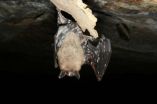Neiker-Tecnalia creates air-conditioned greenhouse with alternative energies
2011-02-03
(Press-News.org) Neiker-Tecnalia (The Basque Institute for Agricultural Research and Development) has created an air-conditioned greenhouse using alternative energies that enable the reduction of energy costs, improvements in energy efficiency and an increase in crop yields. The novel system has a biomass boiler and thermodynamic solar panels, which reach an optimum temperature for the crop without using fuels derived from petroleum oil or gas.
Neiker-Tecnalia has installed a biomass boiler (using wood and other organic waste as fuel), together with thermodynamic panels, with the goal of air-conditioning greenhouses destined for intensive crop cultivation. With this method they have managed to reduce costs and improve crop yields, in such a way that seasonal products can be harvested throughout the year. This project seeks an alternative to the usual diesel or heating oil boilers, which emit significant amounts of CO2 to the atmosphere and are very costly for the farmer, given the high price of petroleum oil-derived fuels.
400 kW power
The project was undertaken at a greenhouse in NEIKER-Tecnalia located in Derio, in the Basque province of Bizkaia and near Bilbao. A biomass boiler which produces 400 kW power and is, to date, the largest in Spain using air-conditioning in greenhouses was installed. With the boiler there are 40 thermodynamic panels, employed for the first time in intensive greenhouse cultivation. The combination of both energies act to heat the water which circulates in tubes located a few centimetres above the floor and below the substrate of the crop, the aim being to heat the roots.
The tubes, distributed throughout the whole surface of the greenhouse, transport water at an average temperature of 80 degrees centigrade. Thus optimum air-conditioning for greenhouses is achieved, with the result that the plants grow as in the natural production period. Achieving less expenditure in consumption and having seasonal crops all year round considerably reduces the price of the final product and, thus, enabling competition in the market with products coming from other zones.
The thermodynamic panels used generate energy thanks to the difference in temperature between a cold gas that circulates through a closed circuit and the ambient air temperature. They outstand for their low energy cost, as they are able to function in situations without sunlight and, thereby, produce energy both by day and by night. Moreover, it drastically reduces emissions of CO2 to the atmosphere. They are capable of heating water to 45 degrees centigrade and their cost per kilowatt consumed is 60 % less than the one generated by conventional diesel or heating oil boilers.
The biomass boiler used by Neiker-Tecnalia works with organic waste, such as almond nut shells, olive oil stones, tree pruning cuttings, the waste obtained from clearing forests, granulated pellets of sawdust, sawdust itself, wood shavings or any other leftover from the timber industry. The expenditure in fuel for the biomass boiler is 55 cents for kilowatt consumed, well below the 92 cents of a euro needed for boilers fed by petroleum oil-derived fuels or by natural gas or propane.
Heating the roots to reduce costs
Air-conditioning using alternative energies developed by Neiker-Tecnalia is complemented with a technique known as 'hydroponic soil', involving placing the plants on substrate at a height of some ten centimetres above the hard floor of the greenhouse. This method also enables the roots to be heated by pipes through which water circulates at an average temperature of 45 degrees centigrade. Directly heating the substrate where the roots are found enables reducing the ambient temperature of the greenhouse overall, thus involving less energy expenditure.
All this system involves a network of sensors (distributed throughout the greenhouse) that enables regulating the temperature of the market garden. The meters gather data in real time on the temperature and humidity of the crop zone. The data is sent to a computer which has software capable of programming different actions, such as increasing or reducing the temperature of the greenhouse or fixing the most appropriate hours for heating the plants.
INFORMATION: END
ELSE PRESS RELEASES FROM THIS DATE:
2011-02-03
Older individuals, who constitute a rapidly growing population in the United States, account for a disproportionate share of health care utilization and cost.
Yet more than half of clinical trials exclude people based on their age or age-related conditions, according to a new study by Robert Wood Johnson Foundation (RWJF) Clinical Scholars® at the University of Michigan.
"These findings are concerning because it means that doctors cannot be confident that clinical trial results apply to their older patients," says Donna Zulman, M.D., the study's lead author and a ...
2011-02-03
Clostridium difficile infection (CDI) is a significant and growing problem in hospitals and other health care facilities, but no new drugs to treat the condition have been developed in several decades. However, a large-scale, phase 3 trial conducted by Canadian and U.S. researchers shows that the new antibiotic Fidaxomicin is superior to existing treatments, demonstrating a 45 percent reduction in recurrences vs. the existing licensed treatment. Their results were published in February, 2011 in The New England Journal of Medicine.
"There wasn't much interest in C. difficile ...
2011-02-03
Elements heavier than iron come into being only in powerful stellar explosions, supernovae. During nuclear reactions all kinds of short-lived atomic nuclei are formed, including more stable combinations – the so-called magic numbers – predicted by theory. Yet here, too, there are exceptions: the islands of inversion. Headed by physicists from the Excellence Cluster Universe at the Technische Universitaet Muenchen (TUM), an international team of scientists has now taken a closer look at the island that was first discovered. They have now published their results in Physical ...
2011-02-03
For almost two decades, cardiologists have searched for ways to see dangerous blood clots before they cause heart attacks.
Now, researchers at Washington University School of Medicine in St. Louis report that they have designed nanoparticles that find clots and make them visible to a new kind of X-ray technology.
According to Gregory Lanza, MD, PhD, a Washington University cardiologist at Barnes-Jewish Hospital, these nanoparticles will take the guesswork out of deciding whether a person coming to the hospital with chest pain is actually having a heart attack.
"Every ...
2011-02-03
GAINESVILLE, Fla. — A NASA team including three University of Florida astronomers has found six new planets in a distant solar system that in some ways resembles our own.
The NASA team, including UF associate professor Eric Ford, postdoctoral associate Althea Moorhead and graduate student Robert Morehead, will announce its findings in Thursday's issue of the journal Nature.
"This is the new prototype for a system of rocky planets beyond our own," Ford said. "It changes our understanding of the frequency of solar systems like our own in deep space."
The planets orbit ...
2011-02-03
– Symptomatic lumbar disc disease, a condition caused by degeneration or herniation of the discs of the lower spine, may be inherited, according to a new study published in the Journal of Bone and Joint Surgery (JBJS).
"Previous studies, including studies of twin siblings and subsequent genetic marker studies, have suggested a genetic predisposition for the development of symptomatic lumbar disc disease but have been limited by a small number of patients," noted study author Alpesh A. Patel, MD FACS, assistant professor of orthopaedic surgery at the University of Utah ...
2011-02-03
PITTSBURGH—Writing can be a solitary, intellectual pursuit, but researchers at Carnegie Mellon University have shown that the task of writing an informational article also can be accomplished by dozens of people working independently online.
Each person in the CMU experiments completed just a sliver of the work of preparing an article, such as preparing an outline, gathering facts or assembling facts into simple prose. The "authors" never even spoke with each other. But the research team led by Aniket Kittur, assistant professor in CMU's Human-Computer Interaction Institute ...
2011-02-03
SAN ANTONIO (Feb. 2, 2011) — Obesity among women of childbearing age is increasing worldwide. Because babies of obese mothers are themselves predisposed to obesity, society can reasonably expect the epidemic of obese and overweight people to continue through future generations.
In the midst of this trend, UT Health Science Center San Antonio obstetrics researchers are studying the question: If mothers lose body fat before pregnancy, does it improve the lifelong health of their children? This could be one way to break the transgenerational cycle. A collaborative study ...
2011-02-03
A team of wildlife experts led by UC Davis called today for a national fight against a new fungus that has killed more than 1 million bats in the eastern United States and is spreading fast throughout North America.
"If we lose bats, we lose keystone species in some communities, predators that consume enormous numbers of insects, and beautiful wildlife species that are important parts of North America's biodiversity," said Janet Foley, a UC Davis professor of veterinary medicine at the Center for Vectorborne Diseases.
Foley and her co-authors' call to action appears today ...
2011-02-03
Nacre, commonly known as mother-of-pearl, is the iridescent material lining many mollusk shells. It is part of a two-layer armor system that protects the animal from predators. The brittle outer layer of the shell absorbs the initial impact, but is prone to cracking. To prevent these cracks from catastrophically propagating through the shell to the animal itself, the nacreous layer is surprisingly strong and tough, with outstanding crack arresting properties. Thus it acts as a lining to maintain the integrity of the shell in the event of cracking of the outer layer.
"What ...
LAST 30 PRESS RELEASES:
[Press-News.org] Neiker-Tecnalia creates air-conditioned greenhouse with alternative energies


